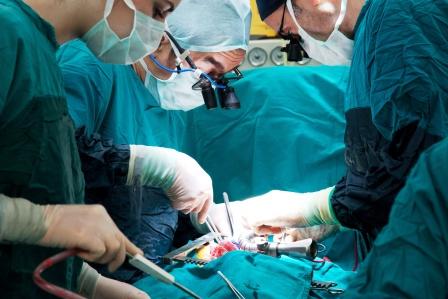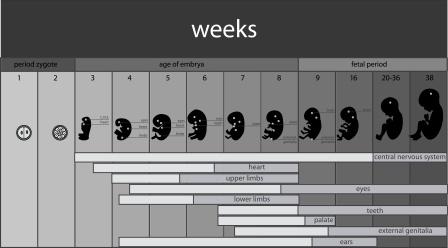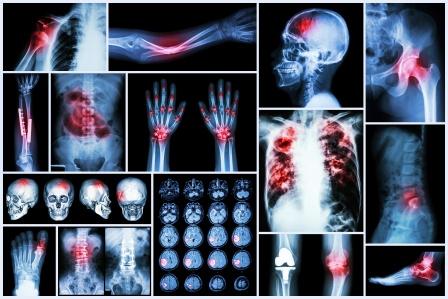Acharya Sushruta: Work, Samhita, Legacy, Amazing Facts
Article by Dr Manasa
References of Ayurveda found in Puranas, Vedas and many other ancient scriptures point towards the unpredictable periodicity of this medical system. We have references quoting that Ayurveda has descended from the creator Brahma himself. This gives a dimension of Ayurveda being a divine science which was created and formulated by the creator, learnt by Gods and sages, who in turn taught and preached Ayurveda for the benefit of mankind. Ayurveda has been existing from time immemorial. Ayurveda is thus the pioneer and mother of all medical sciences.
Read related: How Ayurveda Originated?
Therefore, Ayurveda is what its authors have made it to be. Among many authors who have written the treatises which have become standard references and guidelines for tonnes of generations Acharya Sushruta stands an iconic legend as far as the surgical part of medicinal part is concerned.
Charaka Samhita,
Sushruta Samhita and
Ashtanga Sangraha
are known as ‘Brihat Trayis’ (Brihat Trayees), meaning 3 great treatises or ‘greatest trio’ of Ayurveda.
Acharya Sushruta is the author of ‘Sushruta Samhita’ an Ayurvedic treatise which is a compilation of lessons related to basic concepts of Ayurveda,
Anatomy and physiology of human body,
causes and management of diseases,
formulations, surgical methods,
Special treatments of Ayurveda like
Panchakarma – 5 basic purification procedures
Kshara karma – alkali therapy for oral administration and external application,
Agni karma – cautery therapy,
basics and details of toxicology and many other health related concepts.

Sushruta Samhita is said to be the most comprehensive treatise written on surgical practice. The modern surgery is also said to be developed from the basics provided by Sushruta. Therefore Sushruta is considered to be the ‘Father of the Surgery’. High regards and respects go to Sushruta for having developed the surgical methods covering all minute details in an era which lacked scientific advancements and technical help.
Table of Contents
The Divodasa connection
Sushruta is said to be the disciple of Divodasa, the king of Kasi. Divodasa was considered as the incarnation of Lord Dhanwantari. In Sushrut Samhita we get references quoting that Divodasa Dhanwantari taught Ayurveda to Susrut, Aupadhenava, Aurabhra etc disciples with special emphasis to surgical (shalya) lessons
Importance to Shalya
This shows that during the time period of Susrut; among the 8 branches of Ayurveda, Shalya Tantra was given the top priority in terms of teaching, preaching and practicing. Divodasa belonged to a royal family. Wars were very common during those days. Obviously the wounds, injuries and other emergencies needed care, treatment and attention. This led to the development of surgical knowledge and implementation.
Dhanwantari and Dhanwantareeya
Dhanu or Dhanwa means surgery, Anta means end, Dhanwantari means ‘master of surgery’. All those who learned Shalya tantra or art of surgery became surgeons and were designated with the title ‘Dhanwantari’. The tradition of ancient surgeons or Dhanwantari’s is called ‘Dhanwantareeya’
Other references of Sushrut and Dhanwantari –
According to the references available in Ramayana, Sushrut was the son of sage Vishwamitra, the preceptor of Rama and Lakshmana (who taught the warfare and military knowledge)
Bhavaprakasha, a treatise of Ayurveda mentioned that Vishwamitra sent his son Susruta to Divodasa Dhanwantari to learn medical science. This shows that Sushrut and Dhanwantari lived during the period of Ramayana.
Kaushitaki Brahmana mentioned Pratardana, son of Divodasa was proficient in philosophy.
Panini, in 7th century BC gives the derivation of the term Susruta and tells its meaning as ‘person skilled in surgery’
Katyayana (3rd century B.C.) also mentioned Divodasa in his works
The name Dhanwantari is found to be mentioned in ‘Milinda Prashna’ (2-3rd century BC work)
From the above said references we learn that it is very difficult to determine the exact dates during which Divodasa and Susruta lived and there are lot of differences in opinions. However taking upper and lower limits of the available data of the periods, we can presume that Divodasa and Sushruta might have lived between 1500-1000 BC
Sushruta Samhita specialities
Some specialties of Sushrut Samhita–
Insistence on theoretical and practical perfection – Sushruta Samhita insists on comprehensive and extensive learning of both theoretical and practical aspects of medical profession, especially surgical knowledge if one needs to provide service to the mankind in the form of a capable doctor. Sushruta Samhita tells ‘The physicians should be well versed in both the aspects of theoretical and practical knowledge. Those who had knowledge only either in theory or practical, are not eligible for medical profession’
Earlier anatomy and dissection – In Shusruta Samhita, Shareera Sthana (section which deals with anatomy of human body) it is mentioned that dissection of the dead body was conducted at first by Acharya Sushruta. It is stated that every medical student should also conduct dissection of dead body to comprehensively learn the anatomy. Dissection was conducted with ultimate precision during Sushruta’s period. Sushruta has also given details of dead body preservation.
This knowledge of anatomy enabled Sushruta to document every minute detail of the
organs, tissues, blood vessels, nerves,
bones and joints etc, with reference to their
structure, quantity, shape, size, capacity, location and dimensions.
This knowledge was thought to be mandatory for becoming a surgeon.
Practice of surgery on props – Shusruta insists that the surgical procedures like incision, excision, suturing etc should not be practiced on the human body at the first attempt. He opines that these procedures should be first practiced thoroughly on props like flowers, fruits, toys etc during the course of learning the operative surgery. Once they are learnt with ultimate precision, the procedures shall be conducted on human body.
Basti karma – Therapeutic enema is a speciality treatment of Ayurveda which is an ultimate remedy for Vata disorders and provides cure for many psycho-somatic disorders. Sushrutha emphasises that prior to performing ‘Vasti Karma’ one should have a perfect practice with the similar type of Vasti yantra (enema apparatus) made up of leather.
Read related: Basti Chikitsa: Benefits, Routes, Types, Indications, Equipment
Kshara and Agni karma – Practice of kshara karma (application of alkalis) and agni karma (cauterization) should be done on dead animals during the learning period. This means to tell that Agni and Kshara Karma should be practiced by applying them on dead animals.
Royal Physicians – Those were the times of Royal physicians. Doctors used to visit the Royal families to treat the royal members. Sushrutha Samhita states that the Royal Physician should be well versed in all the 8 branches of Ayurveda along with the knowledge of allied sciences. In chapter 34 of Sutra sthana (section dealing with basics of Ayurveda medical science), it is mentioned that the royal physicians should be attending on the royal families and they should be careful all the time to protect their lives. This needed a precise medical knowledge.
8 branches of Ayurveda are – Kaya Chikitsa (general medicine), Bala Chikitsa – child and woman care (paediatrics), Graha – treatment of idiopathic diseases (diseases whose causes cannot be precisely tracked, infectious diseases are considered under this branch, bacteria, virus etc can be clubbed under the term graham), Urdhwanga (management of ear, nose, throat, head related diseases), Shalya (surgery), Damshtra (toxicology and forensic medicine), Jara (immunology) and Vrisha (aphrodisiacs)
Sushruta’s Rhinoplasty – Sushruth was very popular for having conducted many Rhinoplasty’s (plastic surgery performed on the nose) successfully. Its origin is dedicated to Ayurveda, mainly Sushruth. The modern day Rhinoplasty is developed from Sushruta’s Rhinoplasty. All replacement operations which use flaps of skin in the immediate vicinity of the loss are known as ‘Indian Plastic Surgery’.
Sushruta Samhita
Sushruta Samhita was originally composed and written by Acharya Sushruta. In a later period Acharya Nagarjuna redacted it.
The original Sushruta Samhita comprises of 120 chapters. These chapters are distributed in 5 divisions as mentioned below:
Sutrasthana – 46 chapters
Nidana Sthana – 16 chapters
Shareera Sthana – 10 chapters
Chikitsa Sthana – 40 chapters
Kalpa Sthana – 8 chapters
Uttara Tantra – 66 chapters
Sutra Sthana Deals with fundamental principles of Ayurveda covered in 46 chapters. Apart from the basic fundamentals of Ayurveda, Sutra Sthana also deals with topics including – preliminary preparations for surgery, various types of surgical instruments, use of kshara (alkalis), agni (fire cauterization), jalouka (leech application), daha karma (cauterization), collection and preservation of medicinal herbs, administration of emetics and purgatives, various types of food substances etc.
Deals with fundamental principles of Ayurveda covered in 46 chapters. Apart from the basic fundamentals of Ayurveda, Sutra Sthana also deals with topics including – preliminary preparations for surgery, various types of surgical instruments, use of kshara (alkalis), agni (fire cauterization), jalouka (leech application), daha karma (cauterization), collection and preservation of medicinal herbs, administration of emetics and purgatives, various types of food substances etc.
Nidana Sthana – Deals with aetiology, pathogenesis, diagnosis and signs and symptoms of diseases covered in 16 chapters. Disorders like Vataroga (Vata predominant diseases), Ashmari (urinary stones), Arshas (piles), Bhagandara (fistula), Arbuda (tumours), Bhagna (fractures), Kshudra Rogas (minor ailments) etc are covered
Shareera Sthana – Deals with embryology and anatomy covered in 10 chapters.
Chikitsa Sthana – Deals with principles of treatment of various diseases and Panchakarma techniques of treatment covered in 40 chapters
Kalpa Sthana – Deals with toxicology covered in 8 chapters
Uttara Tantra –
Uttara Tantra is the 6th and the last division of Sushruta Samhita which has not been composed by Sushruta. It is believed to be an addition to the main treatise (original redactor) contributed by its redactor, Nagarjuna. It deals with various other subjects which were not discussed in the earlier divisions covered in 66 chapters.

Salient features
Salient features of Sushruta Samhita –
Surgery – Sushruta Samhita is an excellent reference for anatomy and surgery, unparalleled
Theory of creation – The concept of Srishti Utpattti Krama (theory of cosmic evolution) resembles the concepts related to it as explained in Sankhya philosophy
Embryology – Sushruta Samhita gives a clear-cut explanation of conception stating that the fertilization takes place by the union of sperm (shukra) and ovum (aartava). Sushruta also clarifies that though the fertilization (formation of Garbha) takes place by the union of sperm and ovum, it is not sufficient for creation of life. The intervention of superior agent in the form of atma (soul or life element) is necessary.
Sex determination on the basis of shape of the zygote (garbha) – Sushruta gives an opinion that the foetus (garbha) takes a recognizable shape in the 2nd month of pregnancy. Various shapes denote various types of sex. Spherical shape of the foetus indicates that the child is male and an elongated shape of the foetus tells us that the child is female. Apart from this, a tumour like shape (arbuda akara) of the foetus indicates that the child to be born would be a napunsaka (hermaphrodite).
Tridosha Theory or Humoral theory of Ayurveda – has been dealt in detail with special reference to physiological, pathological and therapeutic aspects.
Nidra – Different types of nidra (sleep) and swapna (dreams) have been dealt in detail
Kala – The important of Kala (time factor) in the creation and destruction of the world has been emphasised. He mentions time as self-existent and is responsible for the process of creation and dissolution of this universe. Sushruta also states that life and death are also functions of time.
Physiological details – Detailed explanation of the circulation of blood, formation of urine and urinary stones etc are specialities of Sushruta Samhita. Sushruta considers madhumeha as the most serious form of urinary diseases (prameha).
Pathology – Detailed description of various diseases, their causes, diagnosis, symptoms, treatment and diet has been given by the author so as to make it a comprehensive reference for medical practise
Unique classification of disease – Origin of diseases and their classification is covered in a unique way under the topics Adhyatmika, Adhibhoutika and Adhidaivika Vyadhis.
Toxicology – Detailed study of various types of poisons and toxins and their antidotes has been exhaustively covered in the Kalpa Sthana.
Methodical surgery – Surgery is a speciality of Sushruta Samhita. The surgical procedures have been dealt with and have been explained in a systematic way viz. pre-operative (purva-karma), operative (pradhana karma) and post-operative measures (paschat karma).
Practical training on props: Sushruta emphasised on the perfection on surgical methods. He pressed on the need of practical training in a complete way to make a good surgeon out of a doctor. He tells that only theoretical knowledge of surgery is not enough. In spite of having a good hold on surgical theory, one has to undergo extensive training and get practical exposure until he or she can confidently handle surgeries. Before conducting the surgery on the human body, Sushruta emphasises that it shall be practised on props and artificial objects like –
- Excisions (chedana) shall be practised on fruits and vegetables like alabu (cucumber, gourd etc)
- Incisions (bhedana) should be practised on the urinary bladders and internal organs of dead animals, leather bags etc.
- Scraping (lekhana) should be practised on the animal skin covered with hairs
- Venesection (sira vyadha) should be practised on recently dead animals or stalks of water lily (kamala, kumuda) etc
- Extraction (aaharana) should be practised on the bilwa majja (pulp of the fruit of Aegle marmelos)
- Suturing (sevana) should be practised on thick piece of cloth or leather
- Bandaging (bandhana) should be practised on full sized human figures of clay
Surgical instruments, sterilization and unique procedures – Sushruta explains various types of surgical instruments (yantras and shastras), methods of sterilization of the same, 8 types of surgical procedures (ashta vidha shastra karma), shashti upakrama (60 types of management of wounds) which are the specialities of the treatise
Anatomy of vital structures and organs – Shareera sthana covers in detail about the anatomy and location of siras (veins, arteries, and nerves), dhamanis (nerves, soft tissues etc) and marmas (vital organs), the topics being covered in depth
Special treatments – Special surgical methods like agnikarma (fire and alkali cauterization), rakta mokshana (blood-letting), sira vyadha (venesection) etc have been explained in detail
Grafting – Susuruta has described various types of grafting operations (plastic surgery) according to the nature of deformity and tissue or organ involved

Fractures and dislocations – Classification, symptoms, presentations and treatment of fractures and dislocations have been covered in detail.
Surgical conditions – Surgical treatment of piles, fistula, cataract and other ophthalmic conditions, extraction of tooth etc have been covered
Commentaries
Commentaries on Sushruta Samhita –
Below mentioned are some of the names of famous commentators who have written commentaries on Sushruta Samhita.
Jejjata – in 6th century AD, he was supposed to be the first scholar who wrote a commentary on Sushruta Samhita, the name of which is not available
‘Nyaya Chandrika’ – By Gayadas around 11th century AD
Tippani – By Brahma Deva in 10th century AD
Panjika – By Bjaskaracharya or Bhaskara Bhatta in 11th century AD
Bhanumati – By Chakrapani in 11th century AD
Nibandha Sangraha – By Dalhana in 12th century AD
Susrutardha Sandipani – By Harana Chandra Chakravarti in 1908 AD
I would say that Sushruta Samhita is the gospel of Surgery. Sushruta is known as ‘father of surgery’ for his exemplary contribution to the field of Surgery. In a time period wherein there were hardly any facilities, Sushruta formulated the art of surgery and created it from the base. The instrumentation and methodology of surgery and various surgical processes which he practised and preached became the foundation for the modern day surgery. He thus became a pioneer of an alternate method of healing the mankind. When the diseases got stubborn and could not be cured by medicines, the instruments were used to remove them.
Anything which was harmful for the body and mind (including foreign objects which have entered the body or any extra tissues or growths like tumours etc which are formed within the body) were considered as Shalya. Removal of these shalyas and thus providing a relief from the diseases caused by Shalya became the speciality of Shalya tantra (surgical school of thought). Sushruta became the master and pioneer of this science. Shalya is also mentioned as a part of Ashtanga Ayurveda (important branch of 8 branches of Ayurveda).
It needs ‘a lion’s heart and ladies finger’ to perform a perfect surgery. Surgery is the most difficult part of medicine and needs accuracy and perfection to accomplish a surgery, be it a minor or major one. I would like to give ‘Hats off’ to Sushruta for having contributed this ‘science of surgery’ to the ailing mankind. The fact that Sushrutha made the beginning of every aspect of surgery, documented all the details and techniques of Shalya tantra with almost no facilities available makes us bow down our head with respect and reverence to this great saint and teacher of Ayurveda.
Read related: Acharya Charaka: Work, Samhita, Legacy







